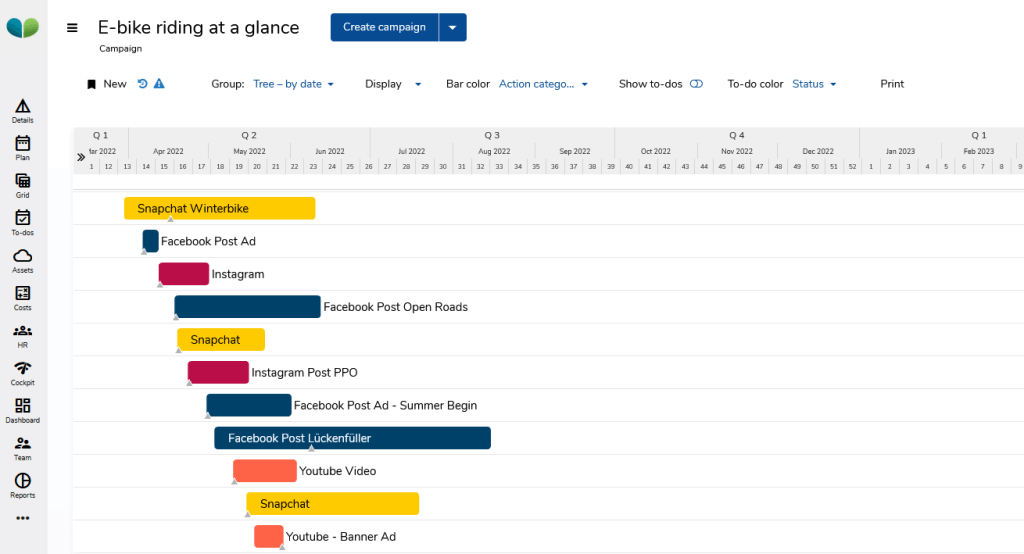Ever wondered how businesses manage to keep their product information accurate across multiple platforms? PIM may hold the key to the answer.
Technology like this makes digital experience seamless and enticing.
But what exactly is a PIM solution, what is its importance, what are its use cases, and how to implement it in your company?
These and other questions are now addressed in this article.
What Is PIM?
PIM stands for product information management, a system that centralizes, manages, and enriches product data. It ensures consistency throughout all sales and marketing channels.
Ok, that makes sense, but why do PIM systems even matter?
Because they help businesses handle a wide range of products, especially in ecommerce and omnichannel retailing, where up-to-date and detailed product data are a part of customer satisfaction.
By centralizing product details, a PIM system allows for the efficient distribution of information to various platforms, online stores, and physical catalogs. It guarantees that customers have access to the same relevant details no matter how they shop.
Also, PIM can help you improve the speed to market for new products and updates, because it streamlines the organization of product descriptions, specifications, images, and pricing in one place.
PIM Use Cases
The utility of Product Information Management systems stretches far and wide. Let’s explore these use cases and gain insights into using PIM in real life.
Better Ecommerce Efficiency with PIM Solutions
Businesses constantly compete for potential customers’ attention and need tools to help them achieve this goal. This is the first example where PIM can become beneficial.
Such tools let companies efficiently manage large volumes of complex product data, streamline the process of updating product information, and work with multiple sales and ecommerce channels.
The result: Enhanced customer experience and significantly reduced time spent on manual tasks such as data entry. Also, by checking if all product details are true and uniform, you avoid costly errors and maintain a competitive edge.
Enhanced Product Data Management for Omnichannel Retail
Imagine you’re a retailer who has a big ecommerce company and operates via multiple channels. Perhaps, you would feel that maintaining synchronized product data across all channels is kind of an impossible task.
But there’s such a thing as a PIM.
These systems serve as a central hub that integrates with ERP systems, digital asset management tools, and customer relationship management platforms to create a single source of truth for product information.
The result: Retailers can easily update product descriptions, technical specifications, and pricing. They can also guarantee that customers receive the same high-quality information whether they’re shopping online, in-store, or through print catalogs.
Streamlined Marketing Campaigns with PIM Platforms
And what about marketing teams? Well, they can also benefit from implementing a PIM platform!
How?
For example, by providing a centralized repository for all product data – including descriptions, technical specifications, and digital assets – PIM systems enable marketing professionals to launch targeted campaigns more quickly and efficiently.
The result: Marketing channels, from email to social media, can now offer consistent branding and precise product information. As a result, they can improve search engine optimization and overall marketing effectiveness.
Improved Data Quality and Governance with PIM Software
As for the data itself, they can also be improved with PIM. Thus, organizations that deal with tons of extensive catalogs find invaluable support in such software.
These systems enhance data quality through validation processes and check if all gained information is correct and up-to-date. Moreover, product information management programs help in data governance. For instance, they offer tools to manage permissions, comply with industry regulations, and ensure data security.
The result: Companies can deliver reliable product data and drive trust with their customers.
Simplified Business Growth Through Advanced PIM Systems
Advanced systems for managing product information are also like growth enablers for businesses looking to expand into new markets or sales channels.
Just see: thanks to automating the enrichment and distribution of product information, PIM allows businesses to quickly adapt to market trends, explore new distribution channels, and engage with a broader audience.
The result: Companies can remain competitive and seize opportunities for better expansion and innovation.

eBook
Creating a marketing campaign takes a bit more than just some creative flair and a catchy slogan.
This eBook aims to guide you through the 9 most crucial metrics that every marketer should track to measure success effectively.
By the end of this guide, you’ll not only understand the importance of each metric but also know how to leverage them to fine-tune your marketing campaigns for optimal results.
How to Implement Product Information Management (PIM)
in Your Company
We already know the theory and use cases of PIM, but let’s now focus more on your company.
How can you implement PIM to avoid failure?
This process can be done through a series of eight methodical steps designed to ensure that the new PIM system is seamlessly integrated into the company’s current ecosystem.
Let’s see what that looks like.
Step 1: Evaluate your current needs
First, identify your needs that come from gaps in product data management. Assess volume, diversity, and distribution of product data. Consider customer feedback on product information precision as well.
What’s more, determine your integration needs with ERP, CRM, and other systems, like Marketing Resource Management solutions. Thanks to this, you will understand the specific requirements for a PIM system in your business context.

Step 2: Choose the right PIM platform
Next, do research and select a PIM platform that fits your company. Take into account your business size, complexity, budget, and future growth. Check if the PIM software supports digital asset management and data governance, and can integrate with your existing tech stack.
Plus, focus on scalability and user experience to facilitate adoption across departments.
Step 3: Implement master data management practices
Then, incorporate master data management, so you can maintain high-quality product records. Establish a single source of truth for all product information. This way, you will contribute to better data quality and boost uniformity across all your channels.
Step 4: Integrate PIM with sales and ecommerce channels
Your next step is to connect the chosen PIM system with all sales channels, including online, in-store, and third-party platforms. With this integration, you can see real-time product data updates and show availability levels on multiple sales channels.
It also enables seamless customer experiences and opens up new sales channels.
Step 5: Incorporate digital asset management (DAM)
You should also utilize the digital asset management features of your PIM platform. Why? Because thanks to DAM, you will be able to store, organize, and manage digital assets like images and videos alongside product descriptions.
Not only will you have organized product information, but you will also be equipped with all the important digital materials.
The effect? Increased richness and attractiveness of product presentations in digital channels.
Step 6: Ensure data governance and compliance
Above that, apply data governance policies within your PIM tool. Establish rules for data quality, privacy, and regulatory compliance so everyone is on the same page and knows what they can and can’t do.
This step will help you maintain data integrity, secure sensitive information, and guarantee that your business meets industry standards.
Step 7: Train your team on PIM software
Another critical move is to educate your team on the benefits and functionalities of the PIM solution. Training should cover lessons on, for example, how to:
- import data,
- enrich product descriptions,
- manage digital assets,
- and analyze product information.
If the training is effective, it will make the team take full advantage of the PIM system to improve product data management and customer service.
Step 8: Monitor and optimize PIM processes
And the last step: don’t forget to regularly review and refine your PIM management processes. Monitor product data quality, customer feedback, and the performance of sales channels.
Also, use insights to optimize product information, add new features to your PIM platform, and explore opportunities. Why? Because it can enhance customer experience and expand to new markets.
Why Shouldn't You Rush Implementing PIM?
It all sounds great and certainly encourages you to implement such systems as soon as possible, but – don’t hurry.
Before you take it up, you should:
Understand the Complexity of Accurate Product Data
What if you implement a product information management system too quickly? Well, this can lead to insufficient product data and directly affect customer trust and satisfaction.
That is, instead of reaping many benefits, you will first cause a lot of trouble.
Accurate product data is crucial for ecommerce businesses that sell products online. But incorrect or inconsistent data can result in:
- returns,
- complaints,
- and negative reviews,
which can damage your brand’s reputation.
Our advice? Take the time to verify if your PIM system adequately manages product data, including detailed descriptions, pricing, and media files.
Check Integration Challenges with Existing Systems
The implementation requires careful integration with existing enterprise resource planning (ERP), customer relationship management (CRM), and other critical systems. So, rushing this process can cause significant disruptions in how product data is managed and can create data silos rather than eliminating them.
For example, complex data from your ERP system, such as inventory levels and pricing, needs to sync perfectly with your PIM because if not, you will harm product data integrity throughout all sales materials and channels.
Our advice? Take a methodical approach and respond to challenges instead of leaving them for later. You will act slowly but effectively.
Train Customer Service Teams
Customer service teams can help utilize the new software. But how can they do this if the implementation process goes too fast?
If the implementation is sped up, these teams may not have adequate time to familiarize themselves with the new system. And the negative results of this situation may vary, from slower response times and inaccuracies in product information shared with customers, to overall negative customer experience.
Our advice? Train, train, train. Don’t skip this element, as proper training lets customer service teams learn how to use the PIM system, quickly access product details, improve service quality, and boost customer satisfaction.
Align Product Lifecycle Management Processes
As PIM tools are central to managing the entire product lifecycle, from introduction to discontinuation, rushing their implementation can create many misalignments with existing product lifecycle management and enterprise resource management processes.
This misalignment can cause issues in how product information is managed throughout its lifecycle and affect sales strategies. On the other hand, a carefully planned implementation makes product information reliable at all stages of the product life cycle.
Our advice? If you want the new PIM system to work in tandem with your product strategies throughout their lifecycle, don’t force their fast implementation. On the contrary, make small changes and always verify they are implemented flawlessly every step of the way.
Ensure High-Quality, Structured Data For Ecommerce Success
For ecommerce businesses, the structured organization of product catalogs in a PIM is more than vital. However, hurried deployments can result in poorly structured data and make it difficult for customers to find and learn about products on your ecommerce store. This can bring a poor browsing experience and reduced sales.
What’s more, well-structured data is essential for SEO and for effectively showcasing products on ecommerce platforms.
Our advice? Take the time and correctly structure product data. As a result, customers will easily navigate your product offerings, and you will boost sales and enhance the ecommerce experience.
Collaborate Effectively with Business Partners
A PIM system provides a centralized platform for managing product content shared with business partners, such as suppliers and distributors. At least, that’s how it should be. So, before implementation, check if you have correct product information on all partners’ sites.
When implementing in a hurry, you might overlook setting up efficient workflows for sharing and updating product information with these partners. This can lead to inconsistencies in product data between different partners and potentially harm business relationships and brand identity.
Our advice? Remember your partners and the information they possess. Make your implementation carefully planned so it supports effective collaboration and enables you to provide timely product data.
Improve Your PIM Solution with MARMIND
MARMIND is a comprehensive Marketing Resource Management platform that combines planning, budgeting, and performance analysis into a single, centralized solution. It acts as a central marketing cockpit that integrates with the rest of your martech stack to give you full control over your marketing. When integrated with a PIM system, it can help align marketing strategies with product information management processes.
With MARMIND, all product-related marketing activities will be up-to-date across various channels. Team members will collaborate seamlessly on product marketing campaigns, and all product data, including descriptions, specifications, and pricing, will be accurately reflected in marketing strategies.
So, if you want to maintain brand consistency and deliver a unified customer experience, reach out to us.
Click and check out how MARMIND can help.
Enjoy PIM Management Like Never Before
PIM can offer many benefits: it can enhance the customer experience, support SEO strategies through detailed product descriptions, and drive sales by making sure that potential buyers have all the information they need to make the right decisions.
You already know how to effectively implement this tool for your business and why it’s not worth rushing the decision. And if you need to further streamline the management of your marketing resources, simply integrate MARMIND with your PIM solution.











